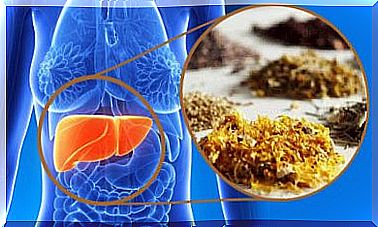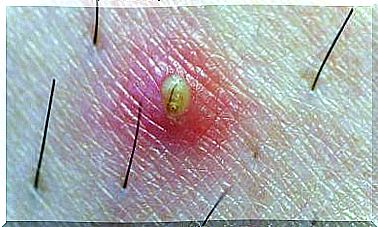Pregorexia: What Is It And What Are The Risks?
Pregorexia increases the risk of miscarriages, premature rupture of the amniotic sac and complications during childbirth. We’ll tell you what’s behind this eating disorder that occurs during pregnancy.

Pregorexia is an eating disorder that can occur during pregnancy. This word comes from the English word pregnancy, which means “pregnancy” and from “anorexia”. Although it is becoming more common, it has not yet been adequately researched and described.
According to data from the National Statistics Institute of Spain, the body weight index (BMI) of nearly 294 out of 1000 women of fertile age is lower than it should be. This seems to indicate a risk of pregorexia due to constant concern about body weight and body image during pregnancy.
What is pregorexia?
As already mentioned, pregorexia is one of the eating disorders. It occurs during pregnancy and is based on a fear of gaining weight during this time. Women who suffer from this may want to maintain or lose weight during pregnancy, which they try to achieve through a number of different practices.
For example, it is common for them to exercise excessively, reduce their food consumption, or even induce vomiting. They also usually compulsively count the calories they consume or skip meals.
It is most common for these behaviors to begin to show more noticeably by the second trimester . This is partly because many women lose weight in the first trimester because of nausea and vomiting, which creates confusion.
During pregnancy, the mother can be expected to gain weight. In fact, it’s believed to be ideal to gain up to 50 pounds. That depends on the body mass the woman had before pregnancy. The problem is that this positive weight gain is compromised by the behaviors that pregorexia entails, which puts the baby at risk.

How does this eating disorder come about?
According to the book “Health and Care During the Developmental Phase ” (original title Salud y cuidados durante el desarrollo) , pregorexia usually occurs in women with a history of anorexia or bulimia.
However, this disease can occur without a previous eating disorder. A study by the University of Jaén confirmed that there are other factors that are commonly associated with pregorexia. Some of them are as follows:
- Low self-esteem or problems with insecurity: In fact, anxiety and depression are also linked to pregorexia.
- An unwanted pregnancy or doubt about becoming a mother.
- A bad relationship with your partner or no support from the other parent at all.
Nevertheless, the clearest origin lies in social ideals of beauty. Social networks, magazines, and advertisements help create the wrong idea about the perfect look. Many people believe that a body has to be slim in order to be beautiful.
As a result, women are becoming more obsessive about weight and beauty. This even leads to many trying to fit into this beauty pattern during pregnancy.
Risks of pregorexia
The baby’s healthy development depends on the mother’s health and nutritional status. If the diet and body weight are insufficient, it not only endangers the life of the woman, but it can also have very negative consequences for the fetus.
Pregorexia causes anemia and is associated with endometriosis and respiratory diseases in pregnant women. They also increase the risk of postpartum depression if one survives pregnancy.
During pregnancy itself, this disease can lead to miscarriages and an increased risk of premature amniotic sacs. This will harm the child as they are more likely to suffer from hypoglycemia, infections, or even die.
According to a study published in 2014, some pregoretic mothers have had to give up breastfeeding. This was because they did not have enough breast milk due to their inadequate diet.
How can this problem be solved?
To treat this eating disorder, the most important thing is to discover it as early as possible. Any pregnancy will require close examination of the mother, but especially if a risk factor is identified.
One of the most important points is to monitor weight during pregnancy. The woman also needs to know that it is normal to gain weight during this time. Help her calculate the appropriate value and avoid creating fear of weight gain.
When symptoms of pregorexia are discovered, personalized psychotherapy must be started. The gynecologist will also make sure that the baby is not at risk. However, there are no specific drugs. In some extreme cases, dietary supplements are given.
Psychological support is needed
Pregorexia is an eating disorder that occurs during pregnancy. The mother is very afraid of getting fat, which is why she has behaviors that affect the baby’s development. It is important to treat this disorder early and offer personalized psychotherapy to the women affected.









